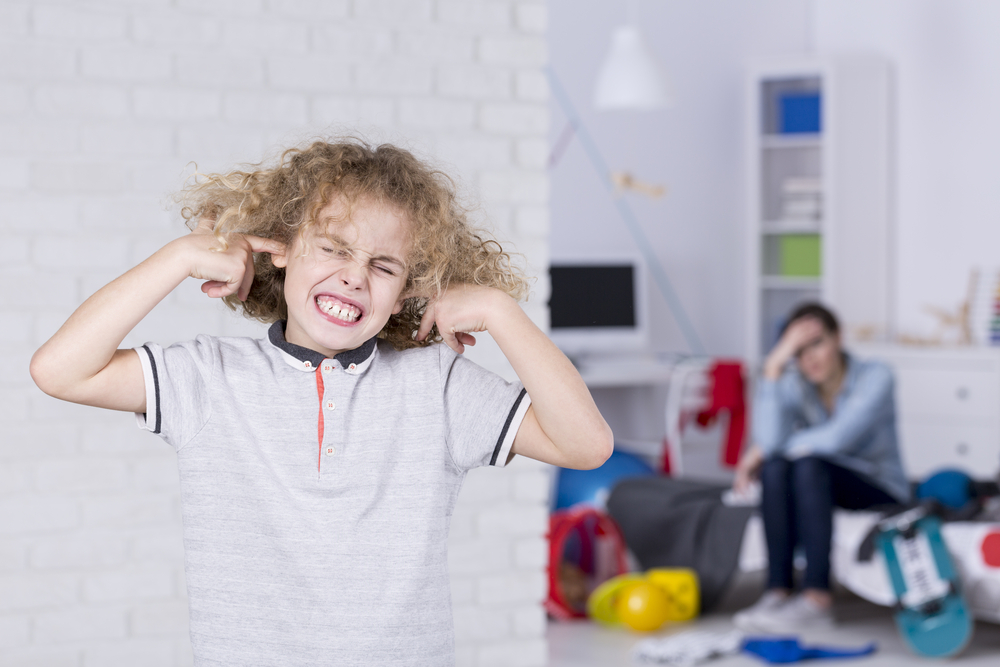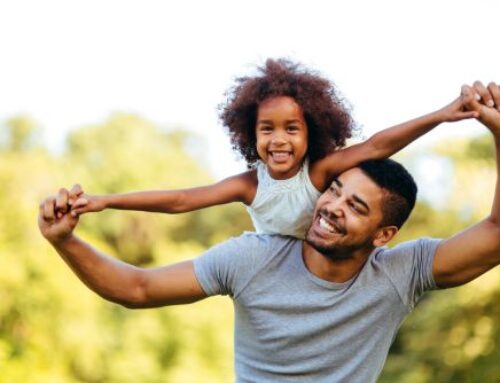How to Address Anxiety Disorders if You’re a Parent or Guardian
While most people think that anxiety disorders are only prevalent in adults, this is not the case. Anxiety in children and teens is occurring more often nowadays, and this can leave a searing imprint on their childhood, adolescent or teenage years.
Types of Childhood and Adolescent Anxiety Disorders
These are the five most common types of anxiety disorders in children:1,2,3
• Generalized Anxiety Disorder (GAD): Kids with this disorder worry excessively about aspects of life such as studies, sports, behavior, punctuality at school and even natural disasters.
These kids tend to be restless, irritable, tense and easily tired; they often aim to be people-pleasers and “perfectionists,” and don’t settle for anything that is less than perfect, lest they become very disappointed. Kids with GAD experience concentration or sleeping difficulties, lack confidence, and may need to be reassured at times.
GAD indicators are said to appear once a child reaches school age (usually at 7 or 8 years old), but some preschool children may already have this anxiety disorder.4 Girls are twice as likely to have GAD compared to boys.5
• Separation Anxiety Disorder: This condition occurs when children experience extreme anxiety when they realize they might be separated from home, family members or caregivers.
Children with separation anxiety disorder often want to remain at home and/or be close to their parents. This can affect their social and academic capabilities. While it’s considered normal for children to feel scared because of the threat of being separated from parents, it’s only appropriate until they are about 2 years old. As the child ages, this fear should dissipate.
Typical symptoms of this disorder include constant worrying about their parents whenever separated, clinginess, refusal to go to school and fear of sleeping alone. In some cases, the child can also experience separation-related nightmares, stomachaches and headaches.
Separation anxiety disorder in children can occur at different points of their school life, especially during kindergarten, middle or high school. Children in their elementary years (typically 7 to 9 years old) may show signs, too.6
• Obsessive-Compulsive Disorder (OCD): Children who have OCD exhibit obsessions (constant, overwhelming thoughts) and/or practice compulsions (customs or habits that aim to decrease onset of said thoughts and prevent possible consequences). These two components of OCD are both time-consuming, and may lead to disruptions in normal routines and increased anxiety.
Some OCD indicators in children include a fear of illness, anxiety toward handwriting or neatness in their home or schoolwork,7 constant handwashing, and health checks on family members because of fear that they may get hurt.8
The first symptoms of OCD typically appear in early childhood or adolescence, with most kids being diagnosed at 10 years old. According to the Anxiety and Depression Association of America, boys are more likely to have an OCD diagnosis before reaching puberty, while girls become affected during their adolescent years.
• Post-Traumatic Stress Disorder (PTSD): This affects children who underwent physical trauma because of incidents like car accidents or physical or sexual abuse, or emotional trauma because of experiencing a shooting or natural disaster. At this particular age, children aren’t able to process some events similarly to adults, and some harrowing events can cause intense trauma.
PTSD indicators often manifest after the event took place, taking up to several months or years. Some of the signs you must watch out for include avoiding friends or family, mental flashbacks, irritability, concentration, sleeping problems and worry toward surroundings.
PTSD knows no age, since these events can happen at any point of the child’s life. However, not all children who are exposed to traumatizing events develop PTSD. While there may be instances where the child is scared, sad or worried about his or her surroundings after said event, alleviating these feelings is possible.
• Social Phobia or Social Anxiety Disorder: Children experience intense fear of social or performance situations that may cause embarrassment or negative judgment about their personality. Unlike the first four anxiety disorders, young children aren’t often diagnosed with this anxiety disorder. Instead, social phobia or social anxiety disorder appears more in adolescents or children in their mid-teens.
Adolescents with social phobia often experience low self-esteem, have difficulties with assertiveness and may show extreme sensitivity when criticized. They also may avoid going to school or parties, and avoid interacting with new people, eating in public, public speaking or performing. This anxiety disorder can trigger physical symptoms such as sweating, blushing, heart palpitations, shortness of breath and muscle tension, too.
Some cases of social anxiety disorder may be limited to certain events. For example, Mental Health America of Illinois (MHAI) points out that some children experience self-assurance in academic and work conditions, but may be apprehensive toward social and recreational events.9
How to Address Anxiety Disorders if You’re a Parent or Guardian
It’s vital that you spot signs of anxiety disorders in children right away and consult your physician or a mental health professional. Leaving these disorders untreated can be destructive, as Dr. Stan Kutcher of Dalhousie University points out in a 2008 article in The Medscape Journal of Medicine:10
“If left untreated, mental disorders can impede all aspects of health, including emotional well-being and social development, leaving young people feeling socially isolated, stigmatized and unable to optimize their social, vocational and interpersonal contributions to society.
Addressing mental health problems early in life can lead to decreases in emotional and behavioral problems, functional impairment, and contact with all forms of law enforcement. It can also lead to improvements in social and behavioral adjustment, learning outcomes and school performance.”
According to NHS Choices, talking to your child about their worries, and expressing reassurance and understanding are vital. Parents or guardians can also explain what anxiety disorders are and their potential effects, especially if they’re talking to a child who may be old enough to understand.11
For young patients, clinical psychologist Lynne Siqueland advises guardians to try assisting the children in honing strategies that may reduce stress or anxiety, and provide ample room for them to learn on their own.12 According to NHS, other ways that can help resolve feelings of anxiety in children include:13
1. “Teach your child to recognize signs of anxiety in themselves and to ask for help when it strikes.
2. Children of all ages find regular routines reassuring so, if your child is feeling anxious, try to stick to regular daily routines where possible.
3. If your child is anxious because of distressing events, such as a bereavement or separation, see if you can find books or films that will help them understand their feelings.
4. If you know a change, such as a house move is coming up, prepare your child by talking to them about what is going to happen and why.
5. Try not to become anxious yourself or overprotective — rather than doing things for your child or helping them to avoid anxiety provoking situations, encourage your child to find ways to manage them.
6. Practice simple relaxation techniques with your child, such as taking three deep, slow breaths, breathing in for a count of three and out for three.
7. Distraction can be helpful for young children. For example, if they are anxious about going to [daycare], play games on the way there, such as seeing who can spot the most red cars.
8. Turn an old tissue box into a ‘worry’ box. Get your child to write down or draw their worries and post them into the box. Then you can sort through the box together at the end of the day or week.”
It’s understandable for parents or guardians to always want all the best for their kids, so they exert much effort in making sure their child’s physical well-being is in optimal condition. However, please do not forget that mental health is an important aspect of life. Most, if not all, of the decisions that can be made every day by a child or adolescent, whether at an academic, emotional or social level, rely on good mental health.
https://articles.mercola.com/anxiety/anxiety-in-children.aspx
Sources and References
- 1, 9 Mental Health America of Illinois, “Childhood Anxiety Disorders”
- 2 Kids Matter, “Anxiety”
- 3 Anxiety and Depression Association of America, “Anxiety Disorders in Children”
- 4 J Am Acad Child Adolesc Psychiatry. 2013 Dec; 52(12): 1294–1303.e1. Published online 2013 Sep 27
- 5 “The Everything Parent’s Guide to Children with Anxiety: Professional Advice to Help Your Child Feel Confident, Happy, and Secure,” August 17, 2008
- 6 AnxietyBC, “What is Separation Anxiety Disorder?”
- 7 OCD-UK, “OCD? Parents Guide”
- 8 Raising Children Network, July 29, 2016
- 10 Medscape J Med. 2008; 10(12): 275. Published online 2008 Dec 8
- 11, 13 NHS Choices, December 10, 2016
- 12 NPR, September 25, 2015




